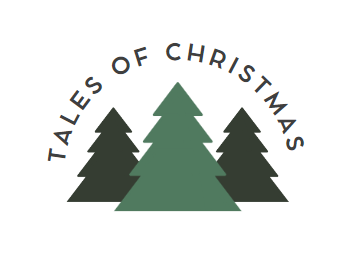As the holiday season unfolds each year, one tradition, in particular, marks the passing of days with joyful anticipation—the advent calendar. These festive timekeepers have become a ubiquitous part of the Christmas celebration, providing both young and old with a daily dose of excitement as they count down to the most anticipated day of the year. However, the origins of advent calendars trace back to a rich tapestry of history and tradition, blending early Christian practices with the ingenuity of 19th-century Germany.
In this exploration, we embark on a journey through time, unwrapping the layers of the advent calendar’s fascinating history. From its humble beginnings rooted in religious observances to its evolution into a commercial and cultural phenomenon, the advent calendar has woven itself into the fabric of holiday traditions worldwide. Join us as we uncover the story behind the doors and windows, discovering the symbolism, tradition, and global impact of these delightful Christmas companions. As we delve into the past, we’ll witness how a simple tool for marking time has transformed into a cherished annual tradition, connecting generations and bringing the magic of Christmas to life.
Unraveling the Christian Tapestry: Origins of Advent
The roots of the advent calendar can be traced back to the early Christian practices surrounding the season of Advent. Advent, derived from the Latin word “adventus,” meaning “coming” or “arrival,” traditionally marks the period of anticipation and preparation for the celebration of the birth of Christ.
In the early Christian church, Advent served as a time of fasting and reflection, lasting for 40 days in preparation for the feast of the Nativity. The faithful would engage in prayer, penance, and acts of goodwill, creating a spiritual atmosphere that embraced the impending joy of Christmas.
The advent calendar, in its earliest form, was a tool to aid believers in this solemn countdown. Rather than the colorful, treat-filled calendars we know today, early advent calendars often took the form of religious illustrations or scriptures. Each day, a new spiritual passage or image would be revealed, guiding individuals through a meaningful journey of reflection and anticipation.
As we peer into the Christian origins of the advent calendar, we uncover a deep connection between the passage of time and the spiritual significance of Christmas. Join us as we explore the evolution of this sacred practice from its early Christian roots to the festive, door-opening calendars we now eagerly anticipate each December. The story of the advent calendar is not merely a tale of timekeeping but a testament to the enduring spirit of hope and expectation woven into the fabric of Christmas traditions.
Crafting Anticipation: Advent Calendars Emerge in 1800s Germany
The enchanting tradition of the advent calendar took a significant leap forward in the cultural landscape of 19th-century Germany. Amidst the festive spirit and holiday preparations, the Germanic people pioneered the concept of physically marking the days leading up to Christmas.
At the heart of this innovation was a desire to instill a sense of eager anticipation in children and families. The first known advent calendars were not the elaborate, mass-produced versions we see today but rather humble, handcrafted creations. Early examples were simple paper sheets divided into 24 numbered squares, with each square concealing a religious image or a sweet treat.
The year 1851 stands out in history as the potential starting point of this tradition, with the publication of a religious devotional book in Hamburg. The book included a set of pictures to be affixed to a piece of cardboard and opened successively every day from December 1st to Christmas Eve. This marked the advent of a new way to count down the days until Christmas.
However, it wasn’t until the early 20th century that printed advent calendars became widely available. The Gerhard Lang Company, founded in the late 1800s, played a pivotal role in this transition. They began producing the first-ever printed advent calendars, featuring festive illustrations and small doors or windows to open each day.
As we delve into the historical roots of the advent calendar, we witness the craftsmanship and creativity of 19th-century Germany that laid the foundation for a beloved holiday tradition. Join us in exploring the evolution from handmade, religious calendars to the beautifully adorned, commercially produced calendars that grace homes around the world today.
Evolution of Advent Calendars
From Handmade to Mass Production
The quaint handmade advent calendars of 19th-century Germany set the stage for a remarkable evolution in the 20th century. As the demand for these festive timekeepers grew, the transition from personalized, handcrafted calendars to mass-produced printed versions became inevitable. This shift democratized the advent calendar, making it accessible to a broader audience and solidifying its place as a cherished Christmas tradition.
Accessibility and Popularization
Printed advent calendars brought affordability and convenience to households, allowing families of all backgrounds to partake in the joyous countdown to Christmas. The vibrant illustrations, often depicting scenes of winter wonderlands, nativity scenes, or festive holiday imagery, added a visual delight to the daily ritual of opening each window or door.
Advent Calendars Enter the Commercial Scene
As the 20th century progressed, the advent calendar underwent a notable transformation from a simple timekeeping tool to a commercially viable product. The convergence of artistic creativity and market demand saw the emergence of beautifully designed, commercially produced calendars. Companies recognized the opportunity to blend tradition with consumerism, giving rise to an array of advent calendars that went beyond religious depictions to include a variety of themes and motifs.
Chocolates, Trinkets, and Surprises
A pivotal moment in the advent calendar’s evolution was the introduction of chocolates and small trinkets hidden behind each numbered door. This innovative twist not only heightened the excitement but also transformed the calendar into a delightful daily treat. The combination of anticipation, surprise, and the joy of discovering a small gift each day added a new layer to the tradition, especially for the younger members of the family.
Technological Advent: Digital and Interactive Calendars
In the digital age, the advent calendar tradition has seamlessly transitioned into the virtual realm. Online platforms and apps now offer interactive advent calendars, blending technology with the timeless charm of the countdown. From virtual doors to multimedia surprises, these modern adaptations reflect the ever-evolving nature of the advent calendar, ensuring its relevance in the 21st century.
Symbolism and Tradition
The Language of Imagery
Advent calendar design has become a fascinating language of its own, with each element contributing to the overall narrative of the Christmas season. From traditional nativity scenes to modern interpretations of winter landscapes, the imagery on advent calendars holds a special significance. The carefully crafted illustrations aim to evoke a sense of wonder, joy, and reflection, providing a visual journey through the holiday spirit.
Themes and Variations
Explore the diverse themes and variations found in advent calendar designs. Some calendars may adhere to religious motifs, while others embrace secular symbols of the season. Whether it’s whimsical characters, nostalgic scenes, or cultural representations, advent calendars have become a canvas for creativity, reflecting the diversity of traditions celebrated around the world.
The Joy of Anticipation
At its core, the advent calendar is a tool for counting down the days to Christmas, transforming the wait into a joyous and interactive experience. The act of opening a door or window each day fosters a sense of anticipation, building excitement for the grand celebration on December 25th. This daily ritual connects individuals with the passage of time, emphasizing the magical journey leading up to the pinnacle of the Christmas season.
Fostering Tradition and Connection
Explore how the countdown ritual fosters a sense of tradition and connection within families and communities. The shared experience of unveiling each day’s surprise fosters togetherness and creates lasting memories. The advent calendar, with its tangible representation of time passing, serves as a unifying element that transcends generations, linking the past with the present in a celebration of shared joy.
Advent Calendars Worldwide
From Germany to the World
Trace the global journey of the advent calendar from its origins in 19th-century Germany to its widespread adoption around the world. Explore how different cultures embraced and adapted the tradition, infusing their unique customs and symbols into the design and celebration of advent calendars.
Regional Variations
Dive into the regional variations of advent calendars, highlighting how diverse cultures put their own spin on this beloved tradition. Whether it’s the inclusion of regional holidays, cultural symbols, or specific thematic elements, advent calendars have become a canvas for expressing the rich tapestry of global holiday celebrations.
Modern Adaptations
Examine the ways in which advent calendars have evolved in the contemporary era. From advent calendars featuring beauty products to those centered around hobbies and interests, the modern marketplace offers a wide array of specialized calendars. Discuss how these adaptations cater to diverse interests, making the countdown to Christmas a personalized and enjoyable experience for individuals of all ages.
Technology’s Role
Explore the role of technology in shaping contemporary advent calendar experiences. Virtual calendars, mobile apps, and online platforms have expanded the possibilities, introducing interactive elements and multimedia surprises. Discuss how these technological advancements have added a new layer of excitement to the age-old tradition.
Conclusion
Summarize the Historical Journey
In wrapping up our exploration of advent calendars, we find ourselves at the intersection of tradition, innovation, and global celebration. The journey of the advent calendar is not merely a timeline but a story woven with threads of creativity, anticipation, and cultural exchange. From its humble origins in early Christian practices to the bustling marketplace of contemporary variations, the advent calendar has stood the test of time, evolving and adapting to meet the changing needs and tastes of generations.
Emphasize the Enduring Connection to Christmas
As we bid farewell to the intricately designed doors and windows that mark the days of December, it becomes evident that the advent calendar’s charm lies not just in its physical form but in the intangible magic it brings to the Christmas season. The countdown ritual fosters a sense of togetherness, tradition, and shared joy, making it a timeless companion in the hearts of families around the world.
In our modern era, where the pace of life seems to quicken, the advent calendar invites us to pause, savor the moments, and embrace the enchantment of the season. As we eagerly anticipate the arrival of Christmas, the advent calendar remains a steadfast reminder that, no matter how fast time may fly, the spirit of the holiday season is best enjoyed one door at a time.
Join us in celebrating the rich history and global tapestry of the advent calendar—an annual tradition that continues to unite and captivate, bringing a touch of magic to the countdown to Christmas.








